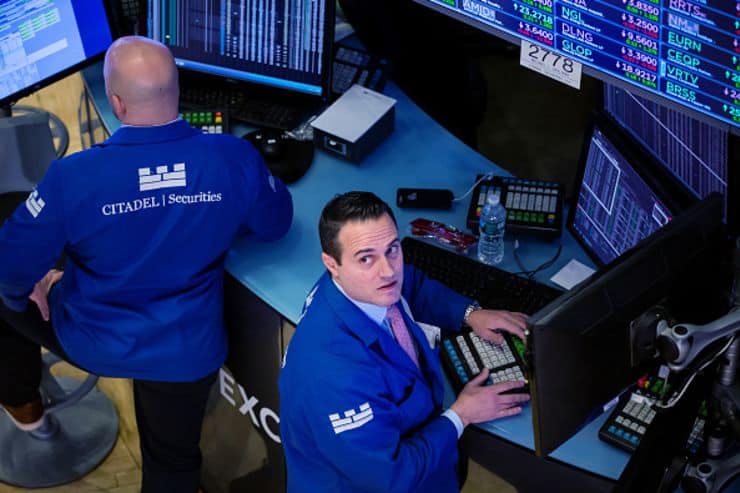
U.S. stock index futures were higher in early morning trading on Friday, after the S&P 500 posted its best day since March on stronger-than-expected earnings.
Futures contracts tied to the Dow Jones Industrial Average gained 128 points. S&P 500 futures and Nasdaq 100 futures also both traded in positive territory.
During regular trading the S&P 500 advanced 1.71%, registering its best day since March 5. The Dow gained 1.55%, snapping a four-day losing streak. The 30-stock benchmark had its best day since July 20. The Nasdaq Composite gained 1.73% for its best day since May. All three averages are on track to end the week in the green.
The gains come amid a strong start to earnings season. Eight members of the S&P 500 posted quarterly results on Thursday morning, with each one topping Wall Street’s expectations. Financial heavyweights Bank of America, Morgan Stanley and Citigroup were among the names that reported.
“The banks painted a strong and healthy picture of the US consumer,” noted Edward Moya, senior market analyst at Oanda. “Wall Street can’t turn negative on the economy after seeing reserve releases, moderating trading revenue, mixed loan growth, and a consumer willing to take on debt,” he added.
Goldman Sachs, J.B. Hunt and PNC Financial are among the names that will report quarterly results on Friday.
A better-than-expected employment reading also boosted sentiment on Thursday. Weekly jobless claims for the prior week totaled 293,000, the Labor Department said, which was the first time the reading came in below 300,000 since the start of the pandemic.
Thursday’s gains came despite hot inflation readings, which some have warned could derail the economic recovery. The consumer price index jumped 0.4% in September and 5.4% year over year, according to data from the Labor Department.
“One thing that is clear is that inflation has been persistently higher than expectations over the summer, and the Fed is beginning to take notice,” said Charlie Ripley, senior investment strategist at Allianz Investment Management.
“The higher levels of inflation are making it difficult for the Fed to ignore and some market participants have called into question the ‘transitory’ view on inflation…we believe higher levels of inflation are forcing the Fed to bring forward their exit strategy from high levels of monetary stimulus,” he added.
On the economic data front, retail sales numbers will be released Friday at 8:30 a.m. ET, while the University of Michigan Consumer Sentiment reading will hit the tape at 10 a.m. ET.
























